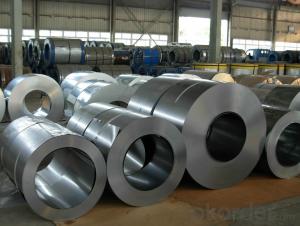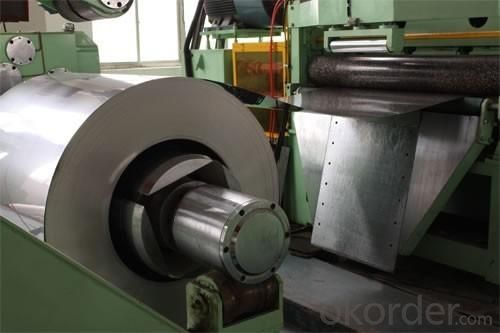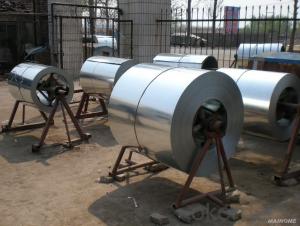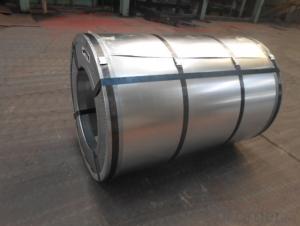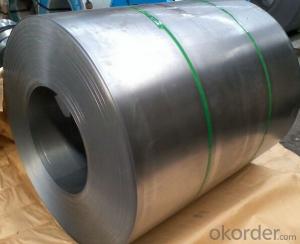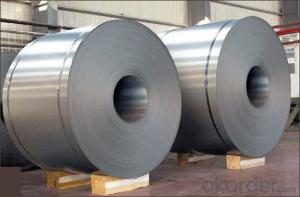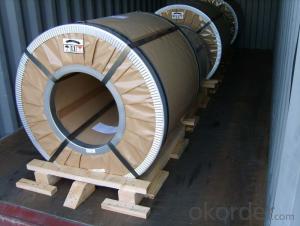Best Cold Rolled Steel Coil High Strength -in Low Price
- Loading Port:
- China main port
- Payment Terms:
- TT OR LC
- Min Order Qty:
- 50 m.t.
- Supply Capability:
- 10000 m.t./month
OKorder Service Pledge
OKorder Financial Service
You Might Also Like
Best Cold Rolled Steel Coil High Strength -in Low Price
1.Structure of Cold Rolled Steel Description:
The raw material of cold rolled steel coil/sheet is high quality hot rolled product, and after pickling continuous rolling, degreasing, annealing,skin pass,slitting and cut to length line etc. Along with it many kinds of new technology and new process of global cold rolling production have been applied. Therefore the quality of the goods could be guaranteed. The product is widely used in outdoor and interior decoration, furnishing manufacturing, home appliance, automobile etc.
2.Main Features of the Cold Rolled Steel:
• Excellent process capability
• Smooth and flat surface
• Workability, durability
• Excellent heat resistance performance
• High strength
• Good formability
• Good visual effect
3. Cold Rolled Steel Images
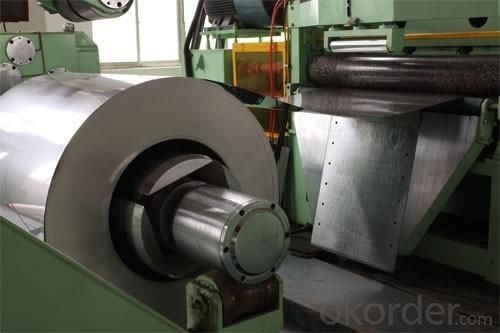

4.Cold Rolled Steel Specification
Standard:AISI,ASTM,DIN,GB,JIS,JIS G3302 ASTM 653M EN10142
Grade: Q195~Q345
Thickness: 0.16mm~2.0mm
Width: 1250mm MAX
Coil weight:3-12 MT
Coil ID:508/610mm
FAQ
1.How to guarantee the quality of the products?
We have established the international advanced quality management system,every link from raw material to final product we have strict quality test;We resolutely put an end to unqualified products flowing into the market. At the same time, we will provide necessary follow-up service assurance.
2. How long can we receive the product after purchase?
Usually within thirty working days after receiving buyer’s advance payment or LC. We will arrange the factory manufacturing as soon as possible. The cargo readiness usually takes 15-25 days, but the shipment will depend on the vessel situation.
- Q: How are steel coils used in the production of agricultural systems?
- Due to their durability and strength, steel coils are frequently employed in the production of agricultural systems. Specifically, these coils are commonly utilized in the creation of machinery and equipment essential for agricultural operations. One prevalent use of steel coils lies in the manufacture of farming machinery such as tractors, plows, and cultivators. These machines necessitate robust components capable of enduring the challenging conditions present in the agricultural environment. Steel coils are employed to fabricate the frames, chassis, and other structural parts of these machines, providing the necessary strength and support. Additionally, steel coils are employed in the creation of irrigation systems, which play a crucial role in efficient water management within agriculture. These coils are employed in the construction of pipes, valves, and fittings, ensuring the durability and long-lasting nature of the irrigation system. Furthermore, steel coils are employed to fabricate storage tanks and silos, which serve as vital tools for storing and preserving agricultural products like grains, seeds, and fertilizers. Moreover, steel coils find application in the construction of greenhouses and agricultural buildings. These coils are used to fabricate the structural framework, providing stability and resistance against environmental factors. Steel coils are also employed in the production of fencing and enclosures to safeguard crops and livestock from external threats. In conclusion, steel coils play a significant role in the production of agricultural systems by delivering the necessary strength, durability, and stability required for farming machinery, irrigation systems, storage facilities, and agricultural structures. Their utilization ensures that these systems can withstand the demanding conditions of the agricultural industry and contribute to efficient and sustainable farming practices.
- Q: Are steel coils used in HVAC systems?
- Yes, steel coils are commonly used in HVAC systems. They are used in air conditioning units and heat pumps to transfer heat between the refrigerant and the surrounding air, thereby cooling or heating the space. Steel coils are efficient in heat exchange due to their high thermal conductivity and durability.
- Q: describe the benifits and disadvantages of the using steel as a material for fasteners
- There are different grades of steels which can suit different application considering corrosion,surrounding atmosphere,pressure,temperature and many more. Let us take the stainless steel fasteners: 1.Resists Rust: The primary advantage to using stainless steel bolts is that they resist rusting. This makes them ideal for outdoor or marine uses, since moisture will not cause them to corrode. Rust basically eats steel and makes it weaker. A rusty, weak bolt can be a serious safety risk, because it can break under a load. 2.Clean: Stainless steel bolts are very easy to clean due to having a higher content of chromium, which creates a lustrous, mirror-like surface that is very smooth. This makes stainless steel an ideal option if aesthetics are an issue. 3.Temperature: Stainless steel has a high melting point, which makes it a good option in machines that are put through immense amounts of heat. The bolts will not fuse together, and can be unfastened when the machines need repairs. Also, in very cold conditions, steel can become brittle. By mixing nickel into the stainless steel, the metal resists becoming brittle at low temperatures. See the source link for details.
- Q: hi to every one I need to konw moer about steel and iron industry (process) thank you in advance for your intresting
- Steel is made from injecting air into molten iron
- Q: what exactly does it mean when some sword makers refer to finding the truth of steel. I have heard that many have tried to find the truth but i dont really understand what there is to find.
- I am unsure of what the Truth of Steel is, but here is the Riddle of Steel (from Conan) Thulsa Doom: Yes! You know what it is, don't you boy? Shall I tell you? It's the least I can do. Steel isn't strong, boy, flesh is stronger! Look around you. There, on the rocks; a beautiful girl. Come to me, my child... Thulsa Doom: [coaxes the girl to jump to her death] Thulsa Doom: That is strength, boy! That is power! What is steel compared to the hand that wields it? Look at the strength in your body, the desire in your heart, I gave you this! Such a waste. Contemplate this on the tree of woe. Crucify him!
- Q: I am going to be working as a mechanic at my school and I just wanted to know if I should get the steel toe boots or regular. I heard that steel toe boots can be dangerous and uncomfortable. The mechanics recommended getting steel toe to be safe but i'm not sure.
- If I was you, I would get steel toe boots, because I got soft toe boots and at the toe part, it dented in, because I used them for riding dirtbikes, I wish I would of got steel toe boots, u should get steel toe because later on you might wish u would of got them:) hope this help
- Q: I wanna strip down my bike and take off all the paint... im thinking of leaving it just the steal color... Do i need to put anythinng on the steel to coat it or can i just leave it like that... Will it rust or anything?
- It will rust but there is a product called POR that comes in clear, it will stop rust almost forever. If you don't want to go to that expense then rinse it down with acid. Ask at an automotive paint store for it.
- Q: What are the different types of steel coil slitting methods?
- There are several different types of steel coil slitting methods, including rotary shear, loop slitting, and oscillating shear. Each method has its own advantages and is used for different applications in the steel industry.
- Q: What does "steel roll number" mean?
- According to the project schedule, track and coil encoding management to the quality of the products, which makes the production with a rational and quality after processing, troubleshoot save time, contribute to the automation of production smoothly, improve and stabilize the quality of products for production order arrangement and classification of coils.
- Q: What are the common welding techniques used for steel coils?
- The common welding techniques used for steel coils include shielded metal arc welding (SMAW), gas metal arc welding (GMAW), and flux-cored arc welding (FCAW). SMAW, also known as stick welding, is a manual welding process where an electric current is used to create an arc between the welding electrode and the base material. The electrode is coated with a flux material that provides a shielding gas to protect the weld from atmospheric contamination. This technique is versatile and can be used for both thick and thin steel coils. GMAW, commonly referred to as MIG (metal inert gas) welding, is an automated process that uses a continuous wire electrode and a shielding gas to protect the weld area. The electrode is fed through a welding gun, and an electric current creates an arc between the wire and the base material. This technique is fast and efficient, making it suitable for high-volume production of steel coils. FCAW is a variation of GMAW that uses a tubular electrode filled with flux instead of a solid wire. The flux provides a shielding gas and also releases additional fluxing agents to protect the weld from impurities. FCAW is often preferred for welding thicker steel coils as it provides better penetration and higher deposition rates. In addition to these techniques, other welding methods like laser welding and electron beam welding can also be used for specific applications in steel coil manufacturing. These techniques offer precise and high-quality welds but are typically more expensive and require specialized equipment. Overall, the choice of welding technique for steel coils depends on factors such as the thickness of the material, production volume, and specific requirements of the end product.
Send your message to us
Best Cold Rolled Steel Coil High Strength -in Low Price
- Loading Port:
- China main port
- Payment Terms:
- TT OR LC
- Min Order Qty:
- 50 m.t.
- Supply Capability:
- 10000 m.t./month
OKorder Service Pledge
OKorder Financial Service
Similar products
Hot products
Hot Searches
Related keywords
